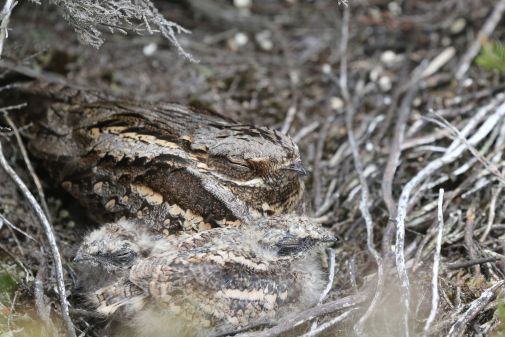There is a significant and concerning decline in the genetic diversity of British nightjar populations over the past two centuries, a study from the University of York has found.
 The nightjar is a nocturnal bird renowned for its elusive nature - photograph by Will Scott
The nightjar is a nocturnal bird renowned for its elusive nature - photograph by Will Scott
Researchers are now calling for further protection of the bird's natural habitat in both Yorkshire and around the UK.
The study applied full genome resequencing to 60 historic and 36 contemporary British nightjar DNA samples and found that more than a third had suffered a decline in genetic diversity. The study also found a worrying increase in nightjar inbreeding over the past 180 years.
North Yorkshire strongholds
Nightjars are nocturnal and are known for their distinctive 'churring' call and North Yorkshire is currently a stronghold for the UK's nightjar population, with good numbers in areas such as Dalby, Cropton and Langdale Forest near Pickering.
They can be found in heathland and open woodland clearings, often near recently felled areas. The birds arrive in May from Africa and leave in early September, making summer evenings the best time to spot them. But they are at a risk.
The research, published in Molecular Ecology, highlights the detrimental impact of habitat loss and fragmentation on this enigmatic long-distance migratory bird.
Acute vulnerabilities
Professor Kathryn Arnold, from the University of York's Department of Environment and Geography, led the research and explained more needed to be done to protect the beloved bird.
"Our findings reveal a clear genetic signature of decline in the British nightjar population Despite their highly mobile nature, nightjars, as specialists relying on specific habitats like heathlands and felled woodlands for breeding and moths for food, are acutely vulnerable to habitat loss and fragmentation," she said.
The study illustrates how the very traits that might seem to protect migratory birds - their ability to move widely - are undermined when their specialist habitat requirements are severely impacted. While the results do not indicate an immediate risk of extinction, they reveal a clear trajectory of declining genetic resilience, which could severely hinder the nightjar's ability to adapt to future environmental changes, disease, or further habitat degradation.
Fragmented populations
Nightjar populations in the British Isles experienced a dramatic reduction of more than 50% between 1966 and 1981, becoming extinct in Northern Ireland and near-extinct in the Republic of Ireland by the late 20th century. Although there has been some partial recovery in Britain due to increased availability of felled coniferous plantations, the populations remain highly fragmented.
Dr George Day, who worked on the project for his PhD, added: "This research serves as a stark warning not just for nightjars, but potentially for other long-distance migratory specialists across Europe. The genetic patterns we've observed in the British population may well be mirrored in other European avifauna facing similar environmental pressures."
The researchers emphasize the critical need for proactive conservation measures. This could include: targeted habitat conservation and restoration, focusing efforts on vital nightjar habitats such as heathlands and felled woodlands.
Increasing connectivity
Professor Arnold also recommended strategies to increase connectivity. "Nightjars would benefit from implementing measures to link fragmented habitats here in North Yorkshire, allowing for greater gene flow and dispersal between populations," she said.
"We also recommend further monitoring of genetic diversity - continuing long-term genetic surveillance in nightjars and extending it to other migratory specialist species to identify early warning signs of decline."
Further information:
Learn more about The Genomic Signature of Demographic Decline in a Long-Distance Migrant in a Range-Extreme Population.











